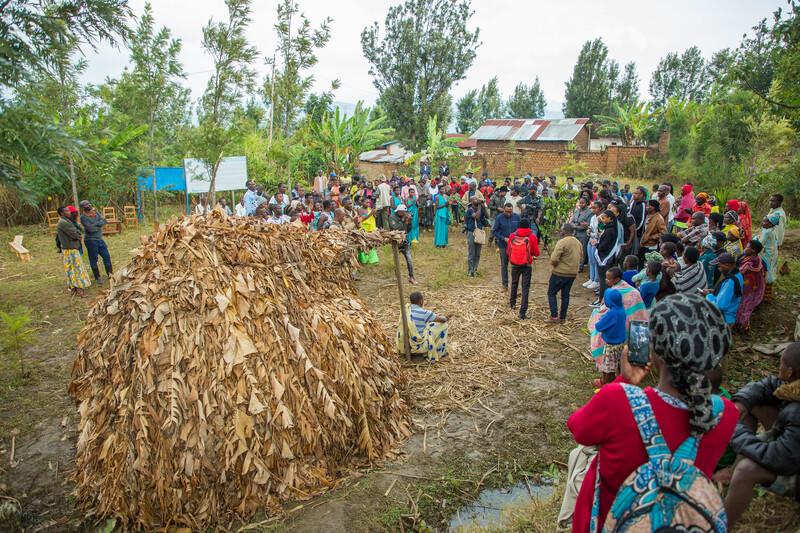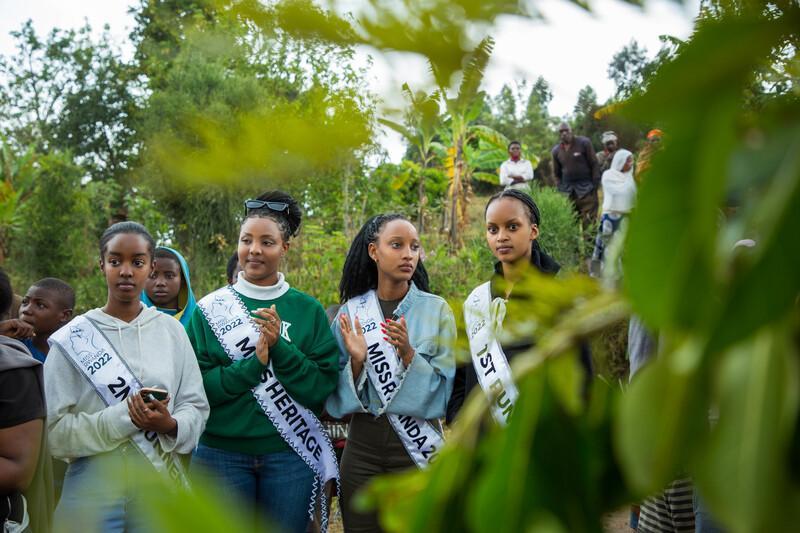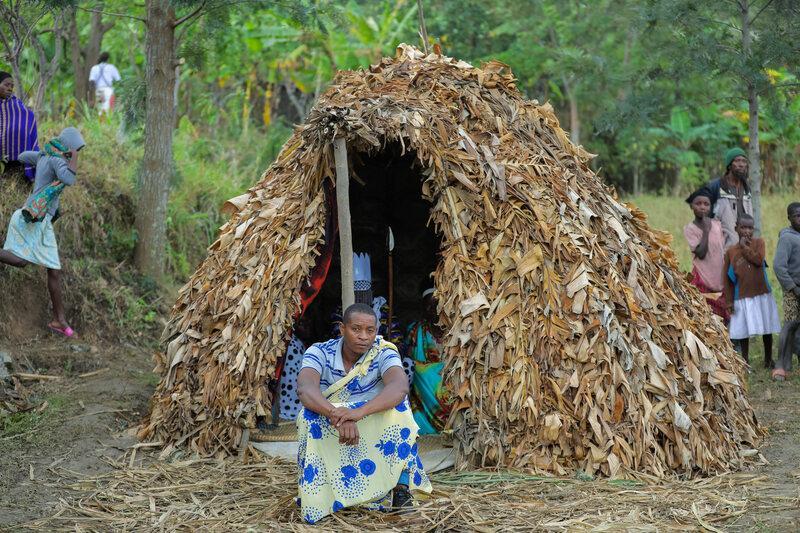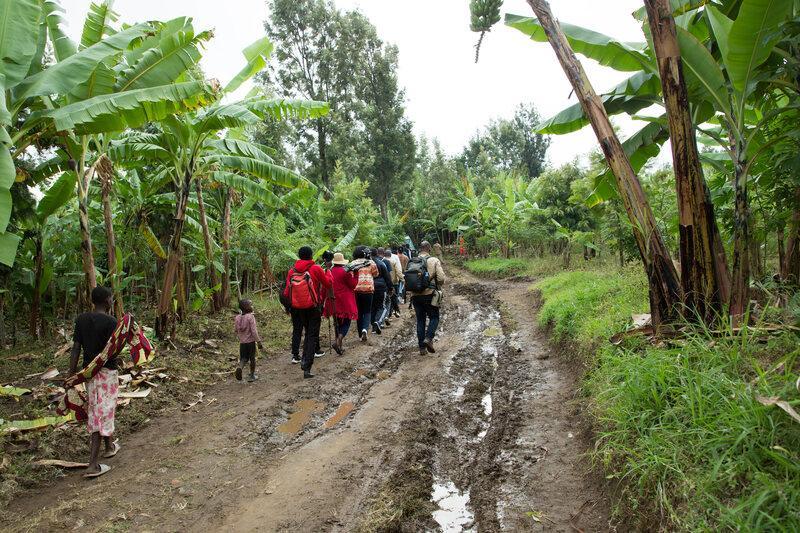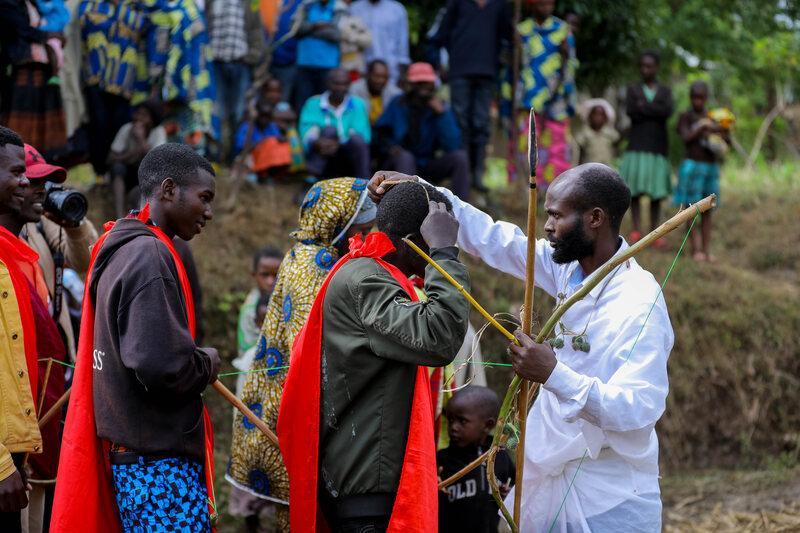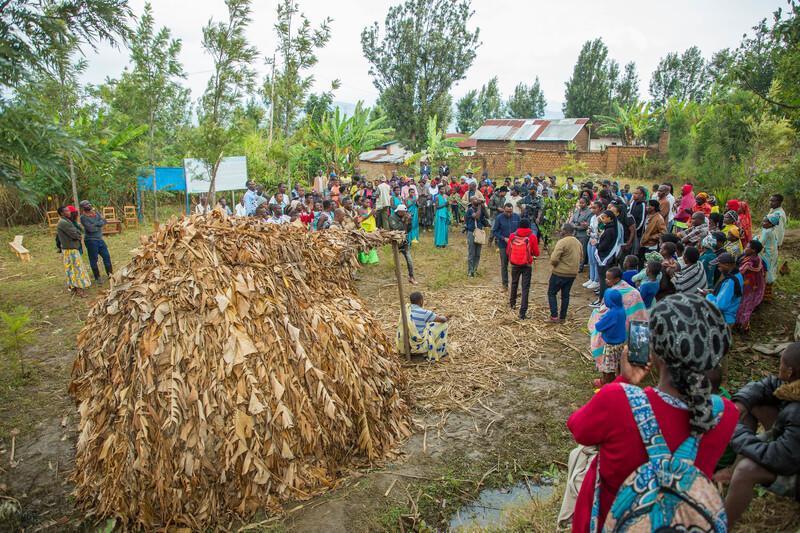Africa-Press – Rwanda. It would be reasonable to say a prayer for every person traveling to Karongi by road, more so when they do it often.
Living in a place where the road is mended before it even cracks can make one wonder if potholes are that bad, until they travel for four good hours, where two are for bouncing on your seat, and perhaps hitting your head on the window several times.
The potholes on this road will not even let you say a word at a single pace and tone.
That is not the worst part of the journey! The way the road meanders, taking endless corners every 10 seconds causes some dizziness, and if you’re on a public bus, chances are that a couple of people will throw up, which is informally talked about as ‘planting flowers.’
As if the throwing up is not enough, passengers will not let roasted corn pass by without buying. Brochettes too, and peas, bananas, groundnuts, and candy.
Miss Rwanda 2022, Muheto with others were among the visitors who went at former residence of Kigeli IV Rwabugiri.
Rubengera locals during a play to represent what it was like at the time Kigeli IV Rwabugiri was King of Rwanda.
It will take you approximately four hours to reach, and changes may depend on whether trucks didn’t have flat tires and you have to share a thin lane.
The journey gets smoother a few kilometres to Karongi. Then, the beautiful mountains are visible, although scarily steep. To see a car overtaking seems too much of a risk, because a car would easily roll down the hill.
Interestingly, almost everyone on the road was wearing a jacket or pullover, even children. You may think it’s the wet season coming, but apparently, it’s generally a cold place.
Some sceneries, one can’t see because of the fog, and the focus then is to find warmth by rubbing your hands together.
This road which is usually taken by Kigalians who want to enjoy Lake Kivu, quietly, also leads to Rubengera, in a bearably muddy road where there is a sign post marked “The home of King Kigeli IV Rwabugiri” in Kinyarwanda.
A group of journalists and visitors on their way to Kigeli IV Rwabugiri’s residence known ‘ibigabiro by’umwami’ in Rubengera in Karongi District.
Rwabugiri, the 28th monarch of Rwanda, who ruled between 1853 and 1895, is known for different things, from being a military genius to being the first Rwandan king to meet Europeans. He received Von Gotzen and his caravan in Kageyo in May 1894.
Rwabugiri had several residences all over Rwanda’s territory, including those built on the shores of Lake Kivu, from where he launched attacks against territories across the lake to expand Rwanda.
Researchers say he built more than 60 royal residences, and that they were not only placed in the heartland of the kingdom, such as Mwima in Nyanza district and Bumbogo in Kigali, but also along the shores of Lake Kivu and other frontier sites regarded as strategic locations, where Rubengera is the most famous, Nyamasheke, Ruganda, and Ngeri, from which he prepared and launched military expeditions, imposed and strengthened the central rule in newly conquered areas.
Different sketches were performed to show the past history of the kingdom.
It is also said that near the shores of Lake Kivu was a dockyard for boats used to carry his soldiers and a place where they would rest, waiting to present to him the situation report on the battle progress.
His residence in Rubengera, built in 1874 upon his return from Butembo in the Congo, was not only famous for having been where Rwabugiri launched military expeditions to Ijwi and Bunyabungo, it is also known to have been the venue for Umuganura celebrations.
Rwabugiri celebrated this event, which was the most important at the time, seven times in Rubengera; in 1874, 1875, 1879, 1880, 1881, 1891, and 1892.
He set a record of conducting more than 16 military expeditions in total against neighbouring states, and he operated many structural transformations during his reign that remains the model of precolonial Rwanda.
King Rwabugiri was not only a military genius, he would also go to the battlefield. He died in 1895 while he was directing an expedition to the Bushi, west of Lake Kivu.
A couple of years before his death, Rwabugiri had appointed Rutarindwa as his successor, whose reign unfortunately was short-lived, because he was killed during a military conflict known as the “Coup of Rucunshu”.
Many residents of the same place turn up to watch plays and learn more about the ancient Rwanda.
Rwabugiri’s home now
I had this trip with a team from the Rwanda Cultural Heritage Academy and a few journalists. I expected nothing less than a traditional Rwandan house, and maybe a few tools Rwabugiri may have used.
Before we even started digesting how his home is now a banana field, the local traditional drummers, ‘Abakaraza’ welcomed us with different types of beats, while the dance troupe did the same in their song ‘Ngwino urebe’ (come and see).
This royal residence, after more than 100 years, was indicated by Igihondohondo tree, but when we reached, the locals had cut it too!
Nothing in this place indicates there ever lived such a great king, and from an informal discussion I had with a local, when the monarch ended and the first republic got in power, people who lived around the residence scrambled and shared Rwabugiri’s land to the extent that when his great granddaughter went to claim it less than a decade ago, nothing was left.
They ended up contributing small pieces to give her something as a souvenir.
Nevertheless, while Rwabugiri’s residence may be no more, residents of Rubengera talk about him as if they saw him with their own eyes. He remains among the greatest Kings, fighters, there ever were, and his efforts to expand Rwanda remain appreciated.
For More News And Analysis About Rwanda Follow Africa-Press

